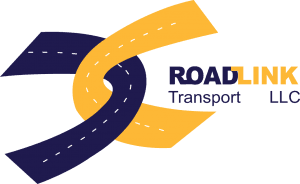Solving the Puzzle: Route Survey & Engineering for Complex Heavy Haulage

When it comes to complex heavy haulage, success hinges on meticulous planning and engineering precision. The foundation of every successful heavy transport operation is a comprehensive route survey and detailed engineering design. These processes ensure not only the safety and efficiency of the haul but also compliance with regulations and the protection of infrastructure.
In this guide, we delve into the critical aspects of route survey and engineering for complex heavy haulage, outlining how expert planning transforms logistical challenges into seamless transport operations.
Understanding the Importance of Route Survey in Heavy Haulage
Before any heavy haul operation begins, the route survey serves as the blueprint for success. It involves a systematic assessment of the entire transportation route—from the point of origin to the final destination. This detailed survey identifies every obstacle, risk, and opportunity along the path.
The survey process includes:
- Measuring road width, gradient, and curvature to ensure the load can be safely maneuvered.
- Evaluating bridge capacities, culverts, and road surfaces to confirm structural integrity.
- Assessing overhead and lateral clearances, including power lines, trees, and signage.
- Identifying traffic restrictions and local regulations that may affect transit.
- Mapping alternative routes to mitigate unforeseen road closures or disruptions.
A professional route survey ensures that the selected path can safely accommodate the weight, dimensions, and turning radius of oversized or overweight cargo, eliminating unexpected hazards during transport.
Engineering the Route: Precision in Design and Calculation
Once the survey is complete, the next stage is engineering the route. This involves transforming the survey data into actionable designs and logistics plans. The engineering phase is where technical expertise ensures that every segment of the route can bear the operational stress of transporting massive cargo.
Key engineering elements include:
- Load distribution analysis to ensure balanced weight across transport axles.
- Bridge and structure load calculations to confirm permissible tonnage.
- Temporary reinforcement design for weak infrastructure or soft soil conditions.
- Turn radius modeling and swept path analysis for navigating sharp corners and urban environments.
- Civil works engineering, such as road widening, ramp construction, or temporary bypass creation when necessary.
This stage is critical for compliance with heavy haulage transport regulations and for minimizing risk to both the cargo and the public infrastructure.
Integrating Technology: Modern Tools in Route Survey and Engineering
In today’s era of smart logistics, technology plays a central role in improving the accuracy and efficiency of route planning. Companies specializing in heavy haulage now utilize cutting-edge software and digital tools for mapping, simulation, and visualization.
Modern innovations include:
- 3D laser scanning and LiDAR mapping for accurate topographic data.
- GIS (Geographic Information Systems) to overlay terrain, infrastructure, and traffic information.
- Simulation modeling software to predict the behavior of the transport convoy in real-world conditions.
- GPS tracking and telemetry systems for real-time monitoring during transit.
These technologies ensure a data-driven approach to engineering and provide clients with enhanced transparency and safety throughout the project lifecycle.
Permitting and Regulatory Compliance
No heavy haul operation can proceed without proper permits and regulatory approvals. Every region and municipality has specific laws governing axle load, transport hours, and route permissions. A crucial aspect of route engineering is aligning the technical design with these legal frameworks.
The permitting process includes:
- Application for overweight and oversized load permits from local authorities.
- Coordination with utility companies for temporary line lifting or pole removal.
- Liaison with traffic management agencies to arrange escorts or temporary road closures.
- Compliance documentation and inspection reports to ensure adherence to safety standards.
Navigating this complex network of regulations requires both engineering insight and administrative expertise, ensuring the operation proceeds without delays or penalties.
Risk Assessment and Safety Management
Safety is the cornerstone of every heavy haulage project. Before execution, the engineering team performs a comprehensive risk assessment to identify potential hazards and establish mitigation measures.
Some of the primary risk considerations include:
- Road instability due to soil erosion or heavy rainfall.
- Bridge overstressing or inadequate load capacity.
- Obstruction from low-hanging power lines or overpasses.
- Traffic congestion in urban areas or restricted zones.
Mitigation strategies often include reinforcing weak structures, using pilot vehicles, and deploying escort teams to guide the convoy through complex sections. Every aspect of the journey is meticulously monitored, ensuring that both personnel and assets remain protected.
Coordination Between Stakeholders
Complex heavy haulage is not an isolated operation—it’s a collaborative effort involving multiple stakeholders. Effective coordination between all parties ensures seamless execution and reduces downtime.
Key participants include:
- Engineering and survey teams responsible for planning and technical validation.
- Transport operators and logistics managers who handle the convoy and scheduling.
- Local authorities and police departments for traffic management.
- Clients and project owners who oversee delivery timelines and milestones.
Strong communication ensures that every decision is aligned, from route preparation to final delivery. The success of the project depends on this synchronized collaboration.
Environmental and Community Considerations
Modern heavy haulage projects also prioritize environmental sustainability and community impact reduction. Route surveys now incorporate environmental assessments to ensure compliance with ecological standards and minimize disruption.
This includes:
- Avoiding protected habitats and sensitive ecosystems.
- Minimizing emissions through optimized routing.
- Reducing noise and vibration impact during night-time transport.
- Engaging with local communities to provide prior notice and manage expectations.
By integrating environmental engineering principles, heavy haul operators not only meet regulatory demands but also uphold corporate responsibility standards.
Execution and Monitoring of the Haulage Operation
Once the route and engineering plans are finalized, the focus shifts to execution and monitoring. This phase is where theory meets reality, and all planning efforts are put into motion.
During this stage:
- Convoy preparation ensures all vehicles and trailers are inspected and secured.
- Route clearance teams verify that all obstacles have been removed or modified.
- Real-time GPS tracking systems monitor movement and timing.
- On-ground coordination units communicate with control centers for live updates.
Continuous monitoring guarantees immediate response to any operational deviation or unforeseen event, maintaining both efficiency and safety throughout the journey.
Conclusion: Engineering Precision for Seamless Heavy Haulage
Solving the puzzle of route survey and engineering for complex heavy haulage is a blend of technology, expertise, and foresight. Every successful transport operation begins long before the trucks hit the road—it starts with accurate data, advanced engineering, and meticulous planning.
At the heart of every successful heavy haul lies a well-engineered route—a blueprint built from experience, precision, and innovation. Through collaboration, regulatory compliance, and advanced technology, today’s heavy haul specialists ensure that even the most complex logistics challenges are executed flawlessly.






